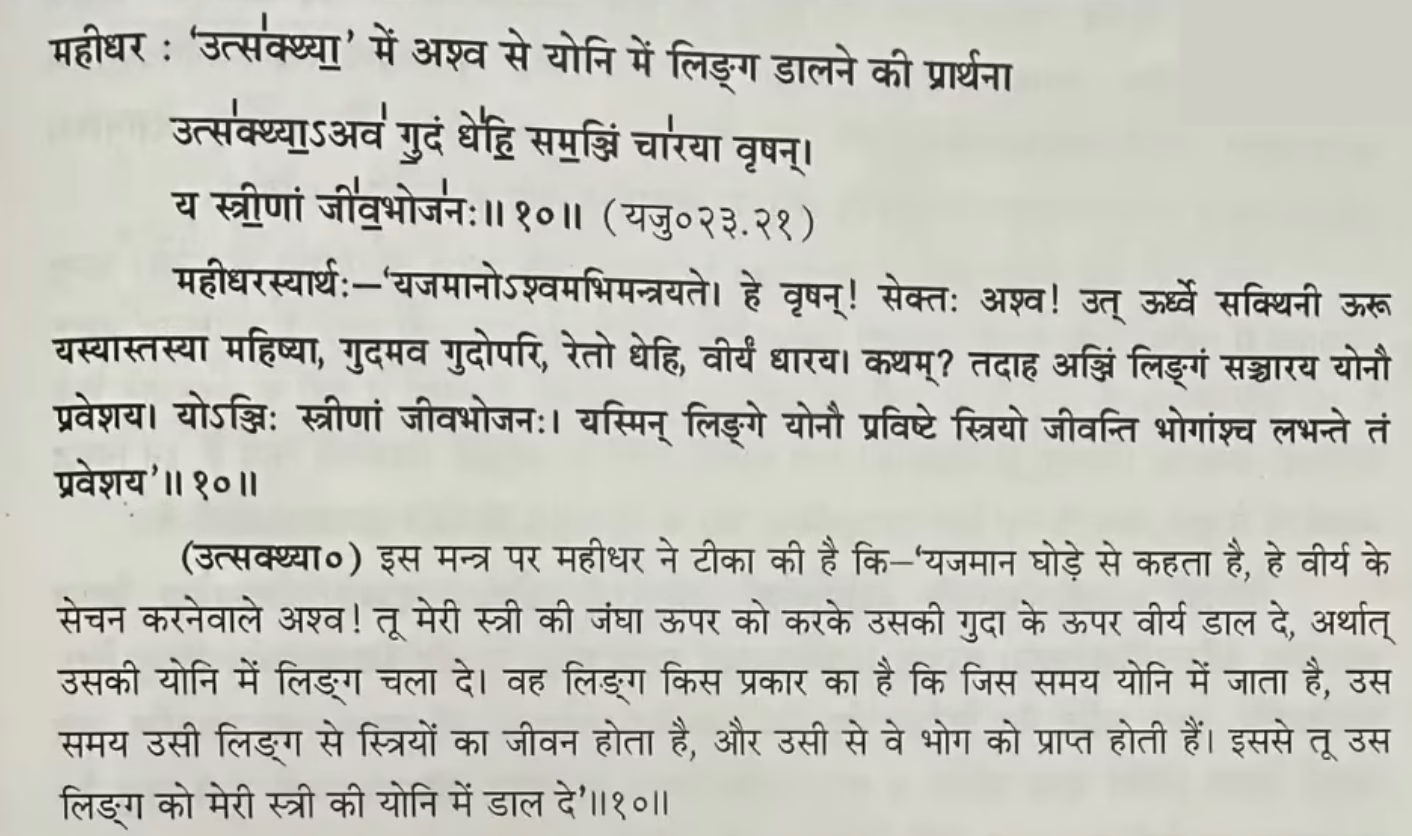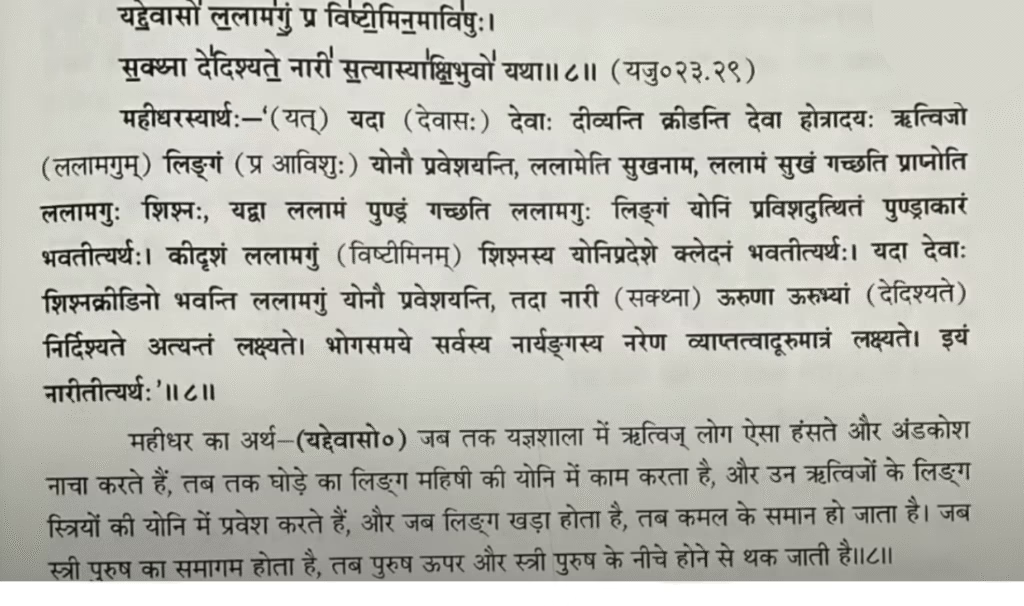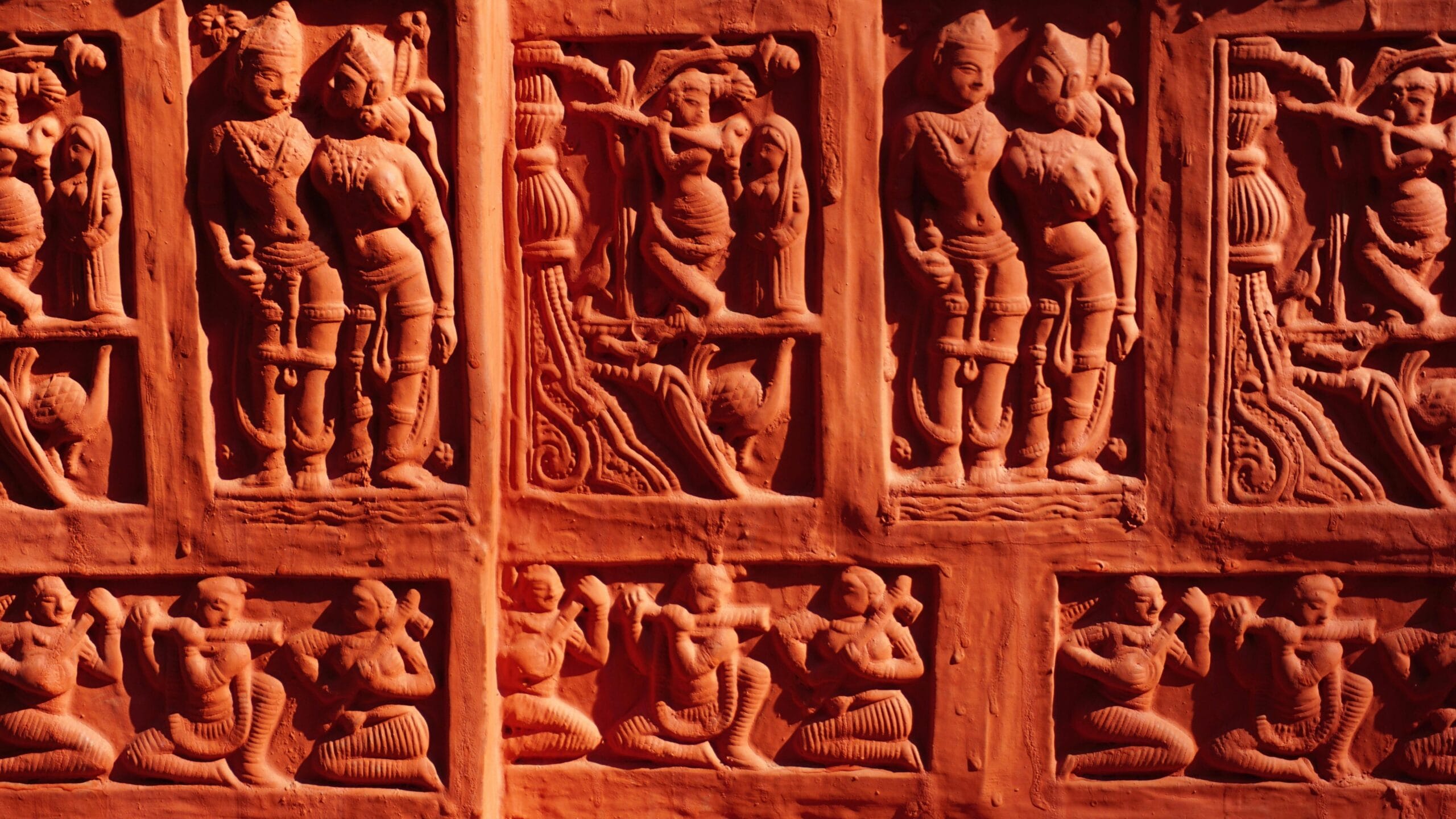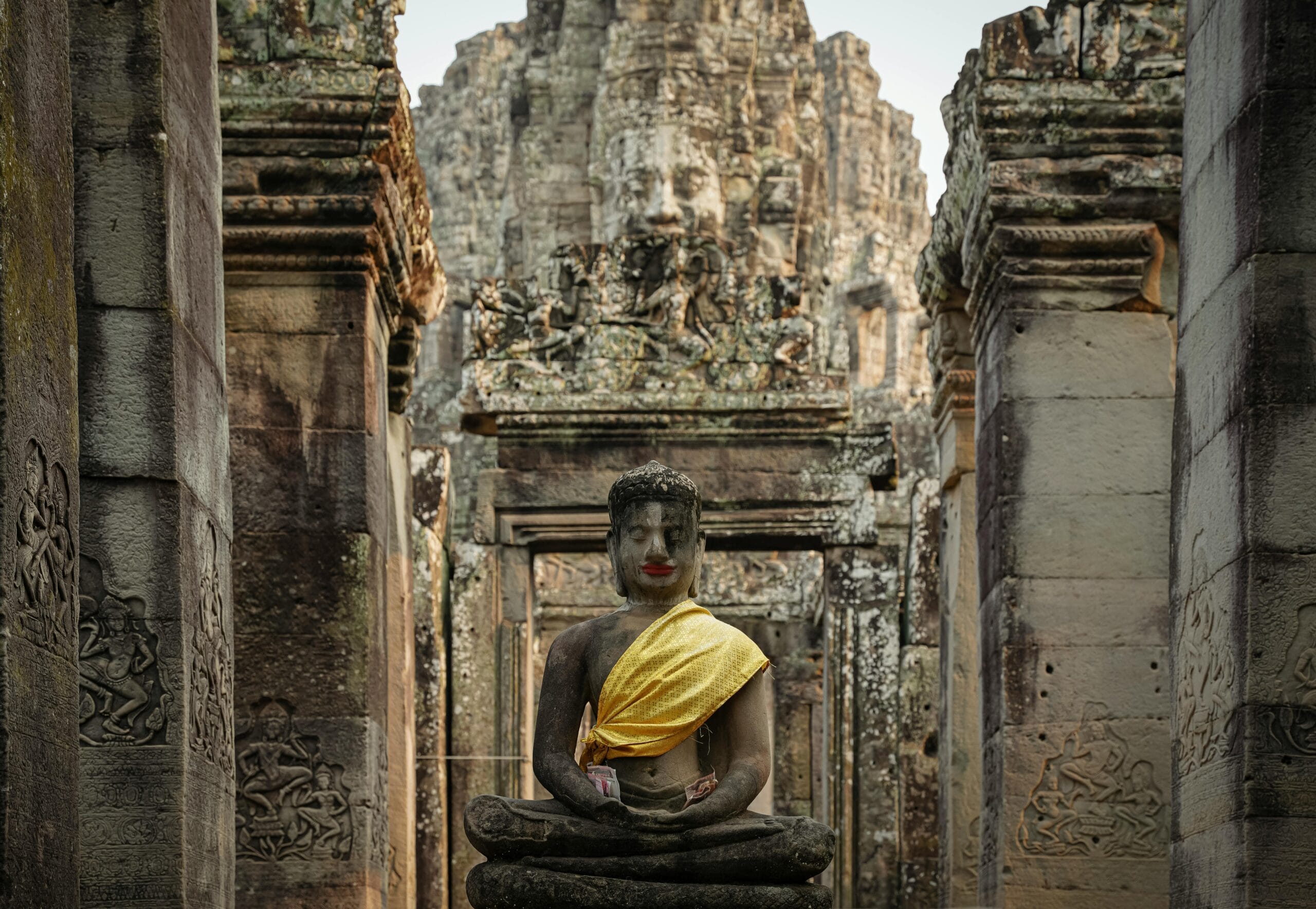Understanding the Ashwamedha Yajna
Ancient religious scriptures, particularly the Vedic texts, describe various rituals and practices. Among these, proponents present the Ashwamedha Yajna, the horse sacrifice, as a significant ancient tradition. However, a critical examination of these scriptures reveals aspects and descriptions that raise questions about the nature of these rituals and the historical claims made about them.
Re-evaluating the Historical Claims of Ashwamedha Yajna
Proponents often claim the antiquity and continuity of traditions like the Ashwamedha Yajna, citing ancient coins or inscriptions depicting horses or the term ‘Ashwamedha’. While these artefacts exist, gaining a deeper understanding requires consulting the religious texts themselves. We must see what the texts actually prescribed and what people practiced.
A key question arises: If the Ashwamedha Yajna was such a central and continuous tradition, what do the religious scriptures explicitly state about it? Do the practices described in these texts align with modern interpretations? Or have meanings and practices changed over time? Delving into older translations and commentaries challenges the idea that ancient traditions remained exactly as presented today or that the scriptures always held their current meaning.
Researching these scriptures, much like any research, involves examining previous findings. Researchers identify inconsistencies or problematic areas and seek to understand how interpretations might evolve or change. Exploring the Ashwamedha Yajna in religious texts like the Yajurveda and Ramayana provides insight into the described practices and the varying interpretations offered by different scholars across centuries.
Table of Contents:
- Controversial Descriptions in Yajurveda
- Explicit Accounts of Sexual Acts and Bestiality in Yajurveda Chapter 23
- 23.20: The Queen and the Horse – A Controversial Interaction
- 23.22: Graphic Descriptions of Female Physiology
- 23.23: The Origin of Brahma and Human Procreation
- 23.24: Anatomically Questionable Descriptions of Intercourse
- 23.29: Priestly Involvement and Communal Rituals
- 23.30: Inter-Caste Sexual Relations and Social Distress
- Interpretations and Commentaries: The Views of Mahidhara, Uvvata, and Sayana
- Dayanand Saraswati's Perspective: Critique and Alternative Translations
- Divergent Interpretations of Vedic Verses
- Saraswati's Critique of Traditional Commentators
- The Paradox of Saraswati's Translation Method
- Motives Behind Saraswati's Alternative Interpretations
- Limited Acceptance by the Mainstream Brahmanical Community
- Questioning Vedic Antiquity Through Linguistic Frameworks
- Questioning the Antiquity of the Vedas: The Role of Commentators and Grammar
- Ashwamedha in the Ramayana: The Account from Balakanda
- Evolution of Translations: Comparing Older and Newer Versions of the Ramayana
- What Can You Do?
- Disclaimer
Controversial Descriptions in Yajurveda
The Yajurveda, specifically Chapter 23, contains verses that describe aspects of the Ashwamedha Yajna. Commentators like Mahidhara, Uvvata, and Sayana, prominent between the 14th and 16th centuries, provided interpretations of these verses. Later, in the 19th century, Dayanand Saraswati offered his own translations and critiqued these earlier interpretations.
Examining these texts reveals descriptions that are highly explicit and, by modern standards, controversial. For instance, Yajurveda Chapter 23, Verse 19, as Dayanand Saraswati translated it based on Mahidhara’s commentary, describes the Yajamana’s wife and her interaction with the horse.
According to this translation, the verse describes the horse as performing an act with the beloved (the Yajamana’s wife). It suggests the horse should lift the wife’s thighs and deposit semen above her anus. The translation further describes the horse’s male organ entering the female organ, stating that this organ gives life to women and through it, they attain enjoyment. It then asks the horse to place that organ into his (the Yajamana’s) wife.

Dayanand Saraswati presents this as Mahidhara’s interpretation. He questions how Brahmanical commentators in the 14th-15th centuries could offer such vulgar translations for their own scriptures. He highlights the apparent obscenity in these verses as traditional commentators interpreted them.
Explicit Accounts of Sexual Acts and Bestiality in Yajurveda Chapter 23
Further verses in Yajurveda Chapter 23 describe other explicit acts and discussions during the Yajna:
23.20: The Queen and the Horse – A Controversial Interaction
Yajurveda 23.20: Dayanand Saraswati, again referencing Mahidhara’s interpretation, states this verse indicates that during the ritual, before all the priests (Ritvij), the Yajamana’s wife lies down with the horse and speaks to it. She asks it to insert its semen into her organ so that she can conceive.

The translation describes the semen that causes conception as belonging to the horse. It questions if the horse establishes it in her. The Reader should note the biological impossibility of human conception from a horse, highlighting the bizarre nature of the description.
23.22: Graphic Descriptions of Female Physiology
Yajurveda 23.22: This verse, as translated, describes women pointing to their private parts with fingers and laughing when women walk quickly. It also speaks of a sound (‘halahal’) produced when a male organ and a female organ connect and when semen falls from both.

The critics question the biological accuracy of semen falling from the female organ. It highlights the intrusive nature of the descriptions of women’s bodies and bodily functions.
23.23: The Origin of Brahma and Human Procreation
Yajurveda 23.23: Translated, this verse describes a virgin performing austerities. It states that the front part of the male organ looks like the mouth (of a female organ). It then describes the father putting a fist-like male organ into the mother’s private part on a bed, resulting in the child’s origin.

23.24: Anatomically Questionable Descriptions of Intercourse
Yajurveda 23.24: This verse describes a small or large male organ being inserted into the female organ. It states that when this happens, both testicles dance above the female organ. This occurs because the female organ is small and the male organ is large.

It further claims that Brahma originated this way, and thus their origins (the person being addressed and Brahma) are similar. The critics question the description of Brahma’s origin involving a bed, asking if beds existed decorated at the time of Brahma’s birth.
23.29: Priestly Involvement and Communal Rituals
Yajurveda 23.29: Referencing Mahidhara’s interpretation, this verse states that as long as the Ritvij (priests) in the Yajna hall laugh and the testicles dance, the horse’s male organ works in the female organ of the buffalo. It then adds that the organs of the Ritvij enter the organs of the women.

This verse broadens the explicit descriptions to include the priests involved in the ritual and their interactions with women. It suggests a communal ritual involving multiple participants. The critics question that this brings up the concept of Niyoga (levirate marriage or similar practices allowing procreation outside marriage).
23.30: Inter-Caste Sexual Relations and Social Distress
Yajurveda 23.30: This verse, again citing Mahidhara’s interpretation, describes a Shudra male servant speaking to a Shudra female servant. He says that when a Shudra man has relations with a Vaishya woman, he doesn’t consider his wife ‘nourished’ by associating with the Vaishya.

The female servant replies that when a Shudra has relations with a Vaishya woman, the Vaishya man doesn’t estimate his wife is ‘nourished’, but feels pain thinking a ‘lowly’ person has had intercourse. The critics interpret this as describing different varnas having sexual relations with each other’s wives, focusing on caste hierarchy and associated distress, rather than physical outcomes.
These verses, as traditional commentators translated and interpreted them and as Dayanand Saraswati highlighted, present a challenging picture of the Ashwamedha Yajna. They involve explicit sexual acts, bestiality, and ritualistic behavior far removed from common understanding or modern claims about the tradition. These controversial descriptions within the Yajurveda force us to reconsider common narratives.
Interpretations and Commentaries: The Views of Mahidhara, Uvvata, and Sayana
Commentators like Mahidhara, Uvvata, and Sayana significantly shaped the interpretations of Vedic texts, particularly the Yajurveda. These scholars were primarily active between the 14th and 16th centuries.
The critics note that some place Sayana in the 12th or 16th century, while Mahidhara is often cited as 14th-15th century. It claims that these commentators preserved and wrote down the Vedas.
The Role of Commentators in Explaining Ancient Texts
According to the critics, these commentators’ interpretations, such as those detailing explicit acts in the Ashwamedha Yajna, were the standard for centuries. Their work involved not just translation but also extensive commentary (Tika) to explain the deeper meaning of the verses.
This is a common practice for ancient texts; once a text exists, commentators explain it for wider understanding, especially if the language proves difficult.
The Mystery of Missing Early Vedic Commentaries
The critics point out that the language of the Vedas was not the common language of India. This suggests a need for commentaries. However, it questions why commentaries on the Vedas only appear prominently in the 14th-16th centuries. It implies the Vedas themselves might not have been widely available or understood in earlier periods.
Enduring Influence on Brahmanical System and Modern Adherents
Mahidhara and others provided translations and commentaries that described the explicit details of the Ashwamedha Yajna discussed earlier. The Brahmanical system accepted these descriptions for a long time.
The critics note that even today, many who identify as Sanatani still adhere to or respect Mahidhara’s interpretations.
Challenging the Antiquity of the Vedas: The Argument from Commentary Absence
The lack of older commentaries (prior to the 14th century) serves as evidence questioning the supposed extreme antiquity of the Vedas (claimed to be millions of years old).
If the Vedas truly existed and people understood them for such a long time, why don’t widespread commentaries from earlier periods exist? Compare this to how commentators like Buddhaghosha (5th century CE) explained texts like the Tripitaka. This absence appears as a significant point questioning the historical narrative proponents of the Vedas present.
Dayanand Saraswati’s Perspective: Critique and Alternative Translations
In the 19th century, Dayanand Saraswati emerged as a significant figure. He translated the Vedas and offered critiques of traditional commentators like Mahidhara, Uvvata, and Sayana.
Divergent Interpretations of Vedic Verses
While translating the same verses, Dayanand Saraswati often provided different interpretations, sometimes vastly different from the explicit ones his predecessors offered.
Saraswati’s Critique of Traditional Commentators
Dayanand Saraswati criticized Mahidhara and others, claiming their interpretations went against the original meaning of the Vedas and against Vedic science.

He argued that these commentators did not understand the Vedas correctly. He even used harsh language against them, referring to them as ‘Kupandit’ (bad scholars) and stating they didn’t know how to translate.
The Paradox of Saraswati’s Translation Method
The critics highlight a paradox: Dayanand Saraswati relied on the same texts preserved by these commentators for his own translations. He didn’t claim the texts were corrupted or mixed with external elements. He simply offered a different meaning while criticizing the source from which he derived the text.
The critics suggest this was a deliberate strategy to counter the explicit and potentially damaging interpretations that were becoming widely known, especially with increased interaction with other cultures and the spread of translations by European scholars like Max Müller.
Motives Behind Saraswati’s Alternative Interpretations
Dayanand Saraswati’s motive, according to the critics, involved presenting the Vedas as a source of science and elevated knowledge, moving away from the controversial descriptions earlier commentators provided.
However, the critics argue that his attempts to find alternative meanings and critique earlier commentators were problematic. Those earlier interpretations were the accepted standard for centuries, based on the very texts he used.
Limited Acceptance by the Mainstream Brahmanical Community
Furthermore, the critics note that the mainstream Brahmanical community often did not accept Dayanand Saraswati’s critiques and alternative interpretations. They continued to respect traditional commentators like Mahidhara.
This suggests that Dayanand Saraswati’s views were somewhat outside the established norm for interpreting these texts at the time.
Questioning Vedic Antiquity Through Linguistic Frameworks
The critics also point out Dayanand Saraswati’s use of grammarians like Panini, Patanjali, Yaska, and Katyayana to support his interpretations.

However, it argues that these grammarians generally date to periods contemporary with or after the rise of Buddhism (e.g., Panini in the 7th-8th century CE, though some place him earlier; Buddhaghosha in the 5th century CE, who commented on Pali texts). If the Vedas are millions of years old, the critics question why one would rely on grammarians from relatively recent times (post-Buddha) to interpret them, rather than finding earlier grammarians from the claimed ancient Vedic period. This reliance on later linguistic frameworks to interpret supposedly ancient texts appears as further evidence questioning the Vedas’ extreme antiquity. It suggests they were compiled or heavily influenced much later, perhaps in reaction to Buddhism.
Questioning the Antiquity of the Vedas: The Role of Commentators and Grammar
A central theme involves questioning the extreme age attributed to the Vedas (e.g., millions of years). The argument states that if the Vedas were truly that ancient and central to a civilization, consistent historical evidence of their existence, study, and interpretation across millennia should exist.
The Absence of Early Vedic Commentaries
The critics highlight the absence of Vedic commentaries prior to the 14th-16th centuries as a significant gap in this historical narrative.
While commentators like Buddhaghosha explained Buddhist texts in the 5th century CE, a claimed lack of similar activities for the Vedas exists for the vast period preceding this. This suggests either the Vedas didn’t exist in their current form, people did not widely understand them, or they were not considered central scriptures until much later.
The Linguistic Challenge and Delayed Explanations
The Vedic language was not the common tongue of ancient India, necessitating commentaries and explanations for people to understand it. The absence of these until the medieval period presents a problem for the claim of ancient widespread Vedic knowledge.
Proposed Later Compilation and Systematization of the Vedas
The critics suggest that the Vedas were likely compiled or significantly shaped during a later period, possibly after Buddhism’s decline. Their compilation likely drew upon or reacted to existing linguistic and philosophical traditions, potentially incorporating elements or misinterpreting earlier concepts.
The prominence of commentators only from the medieval period is presented as coinciding with a time when the Brahmanical system might have actively compiled, preserved, and interpreted these texts in a structured manner.
Ashwamedha in the Ramayana: The Account from Balakanda
The Ramayana, specifically the Balakanda, provides another description of the Ashwamedha Yajna performed by King Dasharatha to obtain sons. The critics examine the 14th Sarga of the Balakanda, describing the preparations and execution of this sacrifice.
According to the 14th Sarga:
The Yajna commenced on the northern bank of the Sarayu river after the ceremonial horse had roamed for a year. (Verse 1). King Dasharatha, guided by Rishyasringa and other Brahmins, began the ritual. (Verse 2).

They brought various animals prescribed by the scriptures for the sacrifice. These included animals, serpents, and birds, intended for different deities. (Verse 30)

Aquatic creatures like tortoises (Kurma) and fish also came to the sacrificial area. (Verse 31). They tied these creatures to posts according to scriptural methods. (Verse 31). Dasharatha’s finest horse that had roamed also received a tie there. (Verse 33). They tied a total of 300 animals to the posts in the Yajna. (Verse 33)

Queen Kaushalya, Dasharatha’s senior wife and mother of Rama, participated actively in the ritual. (Verse 34). Kaushalya performed rituals upon the horse using a sword and other implements, touching it with three swords. (Verse 34)
As per the rules of the Ashwamedha Yajna for fulfilling religious duty, Queen Kaushalya stayed near the horse for one night. (Verse 34)
These verses describe a ritual involving the sacrifice of numerous animals, including a horse, and the direct participation of the queen. This included spending a night near the horse and performing actions upon it with swords. This account in the Valmiki Ramayana presents practices that differ significantly from the common contemporary understanding of religious rituals.
Evolution of Translations: Comparing Older and Newer Versions of the Ramayana
A significant point raised by the critics is the difference in Ramayana translations over time, particularly regarding the explicit details of the Ashwamedha Yajna.
Discrepancies in Queen Kaushalya’s Actions with the Horse
The reader can compare a 1927 translation by Chaturvedi Dwarka Prasad with a more recent translation published by Gita Press, Gorakhpur.
This comparison reveals an alteration in the description of what Queen Kaushalya did with the horse during the Yajna.
In the 1927 translation, it states that Kaushalya performed rituals and, being pleased, cut the horse into pieces with three swords.
In the newer Gita Press translation (Balakanda, 14th Sarga, verse 34), the description changes to state that she performed rituals and happily touched the horse with three swords.

The act of ‘cutting into pieces’ has been replaced with ‘touching’.
Alterations in the Description of Sacrificial Offerings
The critics further highlights changes in how the offering made into the fire after the horse’s death is described:
The 1927 translation (19th Sarga, verse 34) explicitly states that the priests took the horse’s fat (charbi) and cooked it according to the method. It then says King Dasharatha inhaled the smoke from the cooked fat according to scripture to destroy his sins (Verse 35). Verse 36 mentions the 16 Ritvijs cutting pieces of the horse’s body and offering them into the fire.
The newer Gita Press translation (Balakanda, 14th Sarga, verse 36) introduces the term ‘Ashwagandha’ and states that after cutting, the skilled priests ceremoniously cooked the goodness of ‘Ashwagandha’. Verse 37 says the king inhaled the smell of the smoke from the cooked ‘Ashwagandha’.

Explicit references to horse fat and meat have been replaced or reinterpreted using the term ‘Ashwagandha’, which refers to a medicinal herb.
The Impact of Translation Changes on Historical Narrative
These changes demonstrate how translations of religious texts have evolved significantly, even within a span of less than a century (1927 to recent). The critics argues that these changes align the texts with contemporary societal norms and avoid presenting practices like animal sacrifice and consuming/offering meat that might be viewed unfavorably today, especially when promoting vegetarianism.
Presenting the act of changing the meaning from ‘cutting’ to ‘touching’ and from ‘horse fat/meat’ to ‘Ashwagandha’ shows a deliberate attempt to alter the historical record of the practices described in the scripture.
The readers should emphasize that when Brahmanical scholars made the 1927 translation, they included these explicit descriptions. This indicates that this was the understood meaning at that time. Subsequent changes reflect a sensitivity to public perception and a desire to present a different narrative about historical practices. This constant alteration of texts is crucial for understanding the true historical content of the scriptures. When the core descriptions of ancient rituals change so drastically in just a few decades, how can we be certain of their original meaning or historical practice? Preserving older versions and understanding these changes is essential.
What Can You Do?
Based on examining these scriptural accounts and their translations, we suggest several actions:
- Share this information widely: Make others aware of the content found in older versions of religious texts and the discrepancies in translations over time.
- Preserve Old Books and Translations: Actively seek out and preserve older versions of scriptures and their translations (like the 1927 Ramayana translation).
- Digitize and Make Information Available: Work towards digitizing these old texts and making them freely available online. This ensures that the original content and older interpretations are not lost or obscured by newer, potentially altered versions. Understanding the history of these texts and how people have interpreted and changed them is crucial for a complete picture of religious and historical narratives.
Disclaimer
This article discusses sensitive topics based solely on the provided video content. The terms used are defined within the context of the source material:
- Ashwamedha Yajna: A major Vedic ritual, specifically focusing on the horse sacrifice, as described in the Yajurveda and Ramayana.
- Yajurveda: One of the principal Hindu scriptures discussed, particularly Chapter 23, containing verses related to the Ashwamedha Yajna.
- Ramayana: An ancient Indian epic discussed, specifically the Balakanda (14th Sarga) and older translations (19th Sarga), detailing the Ashwamedha Yajna performed by King Dasharatha.
- Mahidhara, Uvvata, Sayana: Commentators on the Vedas, particularly Yajurveda, active around the 14th-16th centuries, whose interpretations are discussed and contrasted.
- Dayanand Saraswati: A 19th-century scholar and founder of Arya Samaj, whose translations and critiques of earlier Vedic commentators are central to the discussion.
- Ritvij: Priests or participants in the Yajna ritual as mentioned in scriptural descriptions.
- Yajamana: The sponsor or host of the Yajna ritual, often a king or wealthy individual, and specifically referring to his wife in the context of Ashwamedha as discussed.
- Buddhist Hybrid Sanskrit: A form of Sanskrit used in Buddhist texts, which was mentioned as potentially influencing later Brahmanical grammar and interpretations.
Read more about Ancient Science in the Upanishad.
Find out more about the Ancient Wisdom of Ayurveda.
You can read the Dayanand Saraswati book for free here.
Read the 1927 version of Valmiki Ramayana for free here.
Buy the books here if you are interested!!

महर्षि दयानन्द भारतीय इतिहास के ऐसे महारथी हैं, जिन्होंने भारतीय संस्कृति को उसके स्वरूप में समझने का न केवल प्रयास किया है, अपितु उसे प्रतिष्ठित भी किया है। सत्य की स्थापना के लिए महर्षि ने सर्वप्रथम आर्यसमाज के प्राण ग्रन्थ सत्यार्थ प्रकाश का वाचन किया। तत्पश्चात् वेदों का व्याख्यान करने तथा वेदों के मानक सिद्धान्तों का प्रतिपादन करने के उद्देश्य से ऋग्वेदादिभाष्यभूमिका का वाचन किया। वर्तमान संस्करण की विशेषता यह है कि यह कार्य संदर्भ ग्रन्थ को लक्ष्य करके किया गया है। परिशिष्ट में दी गई वर्णानुक्रमिक सूची ऋग्वेदादिभाष्यभूमिका के संदर्भ ग्रन्थ की पूरक है। अतः इसे ऋग्वेदादिभाष्यभूमिका का संदर्भ ग्रन्थ भी कहा जा सकता है। इसमें महर्षि दयानन्द के कथनों को यथावत रखा गया है।
Do you disagree with this article? If you have strong evidence to back up your claims, we invite you to join our live debates every Sunday, Tuesday, and Thursday on YouTube. Let’s engage in a respectful, evidence-based discussion to uncover the truth. Watch the latest debate on this topic below and share your perspective!







